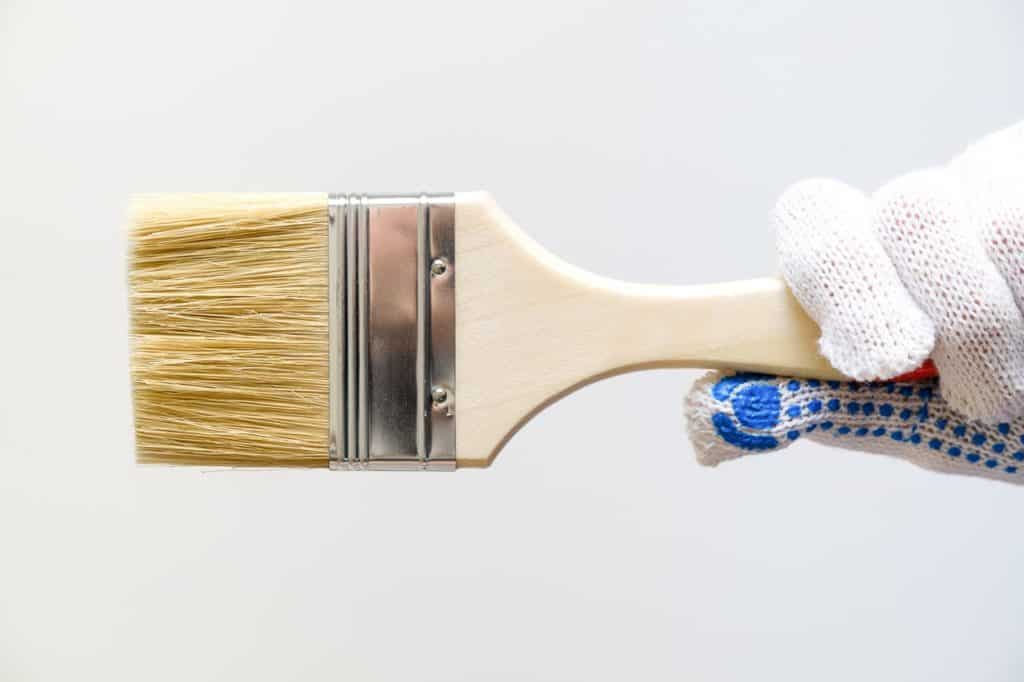
When you have been working with polyurethane or a polyurethane-containing type of finish, you might be wondering how to clean the brush or rag that you have used. In this article, we are sharing a few tips on how to remove poly from your equipment.
While this article focuses on cleaning brushes, you may adapt the suggested methods for other types of equipment as well, e.g. when you need to remove poly from any type of cloth or rag.
Understanding the Different Types of Polyurethane
Polyurethane is an organic polymer that is used in sealants, varnishes and other protective coatings. Its structure is designed in such a way that once it is applied in liquid form and allowed to dry, it will not return to a liquid form even if heated. Thus, it provides protection against sunlight and other heat sources to the applied surface.
The flipside of this is that it also requires some efforts when it needs to be removed. However, depending on the type of polyurethane you are using, it is possible with the correct procedure to clean your paintbrushes after work so they can be kept for many years.
There are two types of polyurethane: Water-based and oil-based. Read this comparison to learn more about the differences. The water-based type is intended to be safer and easier to use and also safer for the environment and also cleaning brushes is simply achieved by using ordinary water.
How to Clean Water-Based Polyurethane from a Brush?
The brush should be flushed thoroughly with water until clean and then dried or alternatively the brush can be placed into a jar of water to soak although this is not recommended as standing brushes in liquid for long periods of time will shorten the life of the brush and in time the bristles will distort and may fall out.
How to Clean Oil-Based Polyurethane from a Brush?
Oil-based polyurethanes require chemicals for cleaning.
Paint thinner or white spirit are generally strong enough to remove the polyurethane although if the brush has dried hard, a good soak and then massage the brush to soften the polyurethane. Acetone is then recommended to be used after paint thinner to clean the thinner from the brush and then wash the brush in soap and water to remove the acetone.
Example of paint thinner.
You can find paint thinner on Amazon.
The soap will act as a bristle softener and ensure the next time you use the brush, the bristles will be soft and flexible. This sounds a rather extended task but if you have good quality brushes, this method will ensure your brushes can be kept in good condition for many years.
How to Prevent Polyurethane from Drying on a Brush?
If you are halfway through a finishing or painting job and only need to stop overnight or for a few hours, there are several tips to keep your brush ready for use the following day. As polyurethane dries only when exposed to air, keeping your brushes in water or wrapping the brush tightly with some cling film food wrap should keep the air out enough to ensure the brush remains moist and in condition to be used the following day.
How to Clean a Brush Using a Brush Comb?
To make the task of cleaning your brushes easier, consider investing in a paint comb. This is a double-headed wire brush made from brass bristles on one side and stainless steel pins on the reverse side. It speeds up the task of removing paint or varnish from the brush’s bristles when cleaning. You can find brush combs on Amazon, for instance.
The comb is intended to be gently inserted into the brush bristles and stroked downwards repeatedly to encourage paint or varnish residue gently out of the brush.
The brush can then be dried using a clean rag then stand the brush upside down in an open jar so the bristles are facing upward. This way the bristles will dry first and ensure they do not attract mold or mildew.
This action will clean the brush not only on the outside but also on the inner bristles quicker and more thoroughly than if just rinsing and will ensure your brushes can be used again and again for many years.
Conclusion
Durability and resistance are among the greatest strengths of Polyurethane as a finish. However, they make cleaning the equipment tricky. Water-based poly can be removed with fewer efforts using clean water but oil-based poly requires some chemicals.
A good recommendation for cleaning both types of polyurethane from a brush is using a brush combs, in particular, if you are conducting finishing and painting jobs regularly. These little tools help clean the brush accurately with much fewer efforts and can also be used for other types of finishes as well.


